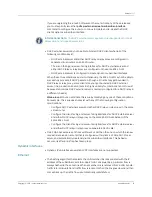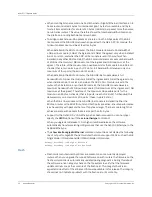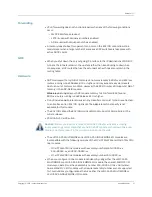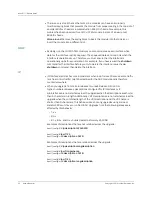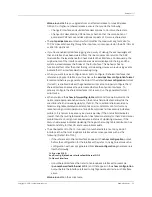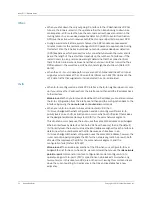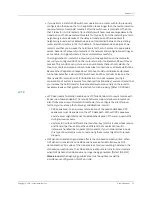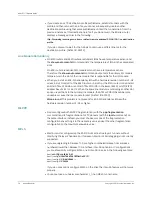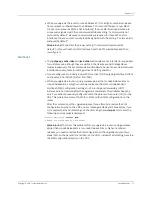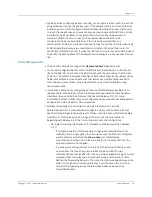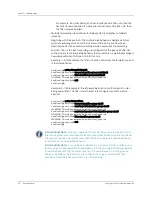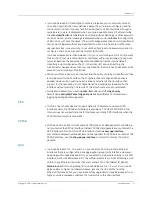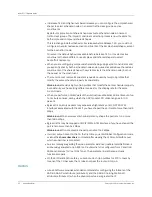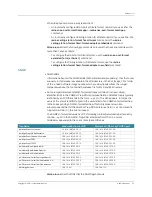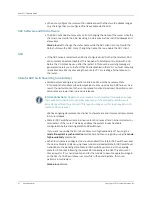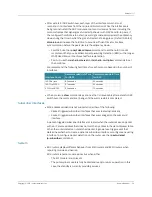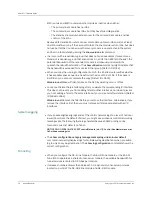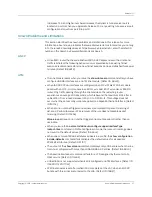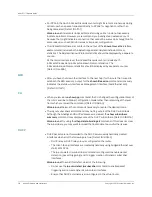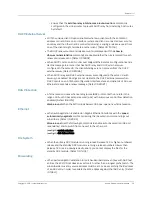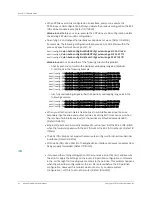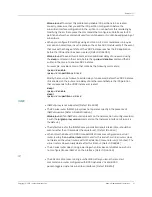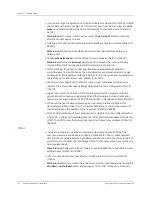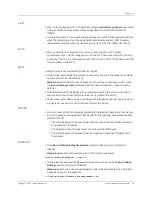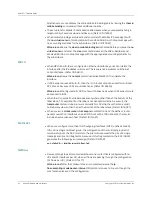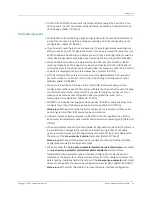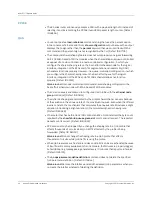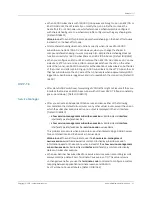
JunosE 11.1.1 Release Notes
32
Known Behavior
Copyright © 2010, Juniper Networks, Inc.
z
In Release 7.2.0 and higher-numbered releases, you can configure the simple shared
shaper to select scheduler nodes in a named traffic-class group as active
constituents.
By default, simple implicit shared shapers activate scheduler nodes in named
traffic-class groups. The implicit constituent selection process is now the same for
both simple and compound shared shapers.
This is a change in default behavior. For releases before Release 7.2.0, you could not
configure scheduler nodes as active constituents of the simple shared shaper, except
for the best-effort node.
To recover the default behavior available before Release 7.2.0, or to select active
constituents that are different, use simple explicit shared shapers to select
best-effort nodes only.
z
When you are configuring compound shared shaping using explicit constituents and
you explicitly specify both a scheduler node and a queue stacked above the node as
constituents of the shared shaper, the system selects the scheduler node (but not
the queue) as the constituent.
z
The router cannot resolve inconsistent requests caused by two QoS profiles that
modify the same scheduler property inconsistently.
Work-around
: Avoid using two QoS profiles that modify the same scheduler property
inconsistently, such as setting different values for the shaping rate for the same
S-VLAN node.
z
When you perform an SNMP walk of the juniQosQueueStatistics MIB, a timeout of up
to 5 minutes ensues, during which the SRP module CPU utilization goes to 100
percent.
z
Egress strict-priority packets may experience high latency on OC3/STM1 ATM
interfaces associated with the LM if you have shaped the port rate to more than 148.5
Mbps.
Work-around
: To ensure low strict-priority latency, shape the port rate to no more
than 148.5 Mbps.
z
Egress traffic may be dropped on OC12/STM4 ATM interfaces if you have shaped the
port rate to more than 542 Mbps.
Work-around
: Do not exceed a shaped port rate of 542 Mbps.
z
Incorrect output is sent to the CLI the first time you enter Global Configuration mode
or issue the
show subscribers
command after viewing the VLAN subinterface over
which a subscriber is connected.
z
An error message regarding the qos-parameter instance QosParameterDefinition is
erroneously generated on an ERX1440 router when it is configured for L2C and QoS
RAM and receives TLV 144 (DSL Type). The parameter instantiation actually
functions properly.
z
On the E120 and E320 routers, you cannot attach QoS profiles to L2TP tunnels by
means of the CLI because the CLI does not pass the router ID to QoS.
RADIUS
z
JunosE Software provides extended commands for configuring the formats of the
RADIUS NAS-Port attribute (attribute 5) and the RADIUS Calling-Station-ID
attribute (attribute 31) when the physical port value is greater than 7.


